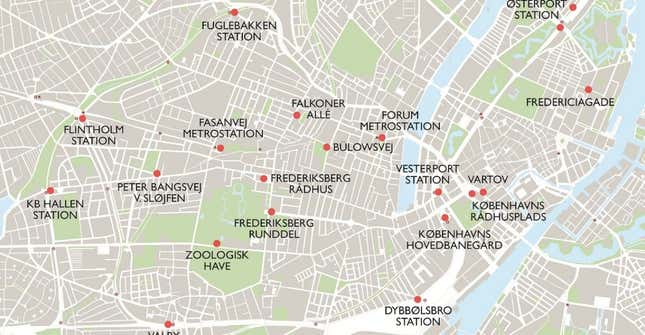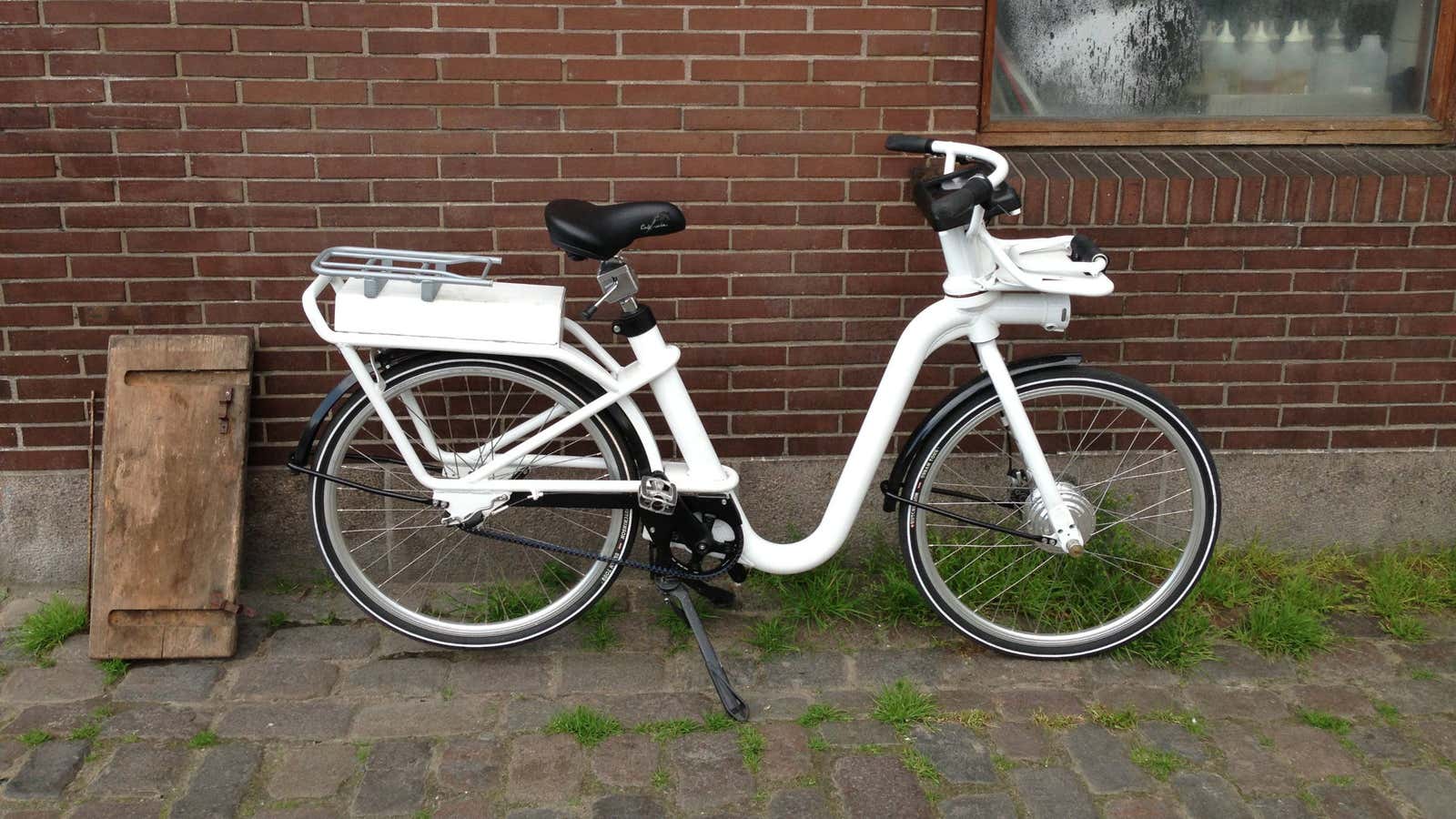If various surveys of happiness, peacefulness, and prosperity (and the endorsement of Tyler Brûlé) are to be believed, Scandinavia is the best place in the world. Judging by Copenhagen’s bikes, they may all be right. The capital of Denmark is in the process of rolling out a new bike-share program that makes the rest of the world’s municipal cycles look positively archaic in comparison: they come with electric motors; they’re fitted with on-board tablets; and they cost 25 Danish kroner ($4.50) an hour, less than half the price to access one of New York’s clunky Citibikes.
It wasn’t always this way. When Copenhagen became the first major city to install a bike-share program back in 1995, it was with old-fashioned machines—no fancy electronic display, no tracking, and no time limit. The only added functionality was a map of the city glued to a board on the handlebars. Like European supermarket trolleys, all riders needed to get going was to insert a 10- or 20-kroner coin into the bike, which they got back when they docked it. In theory, you could only ride it in certain parts of the city, but the bikes turned up all over the place due a lack of enforcement. In 2012, Copenhagen discontinued the program in order to replace it with something more modern.

Now the city that started the world on its current craze for bike-sharing schemes is leapfrogging its imitators. The first 250 new ”GoBikes” hit the streets on March 31, with 20 docking stations between them. The program is funded by the Danish train company Danske Statsbaner (DSB), the city of Copenhagen, and the city of Frederiksberg, which is adjacent to Copenhagen. Once Copenhagen approves the expansion of the scheme, which is expected to happen by the end of the summer, there will be 1,860 white electric bikes plying the streets of Copenhagen and its environs.
So why electric bikes? And why risk attaching an expensive tablet to something that lives outside, exposed to rain, snow, and vandals? The city did not set out with the intention of getting electric bikes, says Andreas Røhl, who heads the Mobility and Urban Space unit at the Copenhagen municipality. The key to that decision lies in the fact that pretty much everybody in Copenhagen already has a bike, says Røhl. This is not for the city’s residents: It would be a waste of tax-payer money to simply give them more bikes. (That is also why the first half-hour is not free, as is common practice in other cities.) Instead, the city determined that GoBikes should be attractive to people who may not be used to cycling—such as tourists and suburbanites.

Think of GoBike program, Røhl says, as an extension of public transport. People who commute into Copenhagen don’t bring their bikes with them, so they would be big beneficiaries of the program. Tourists can also use the bikes to explore the city more extensively than they would if they had to rely on their own stamina. If the program is successful in Copenhagen, it could be extended out to other Danish cities, creating a network of familiar cycle systems across the country.
So far, the bikes have proven surprisingly resilient. Røhl says there have no cases of vandalism or attempted theft of the tablets. Sure, a few bikes have gone missing, but that is a hazard with any such program.
The tablets are there not just to look cool. They offer GPS and maps built around OpenStreetMap, an Wikipedia-style mapping project, because they were better for cycling than commercial maps made around the requirements of motorists. And they also reduce the cost of running the scheme. At busy times, when some docking stations are short of bikes, the tablets offer cyclists incentives (in the form of discounts on future rides) to park them in particular areas. That saves the city money by reducing the need to pick up and redistribute the bikes. Moreover, unlike less-sophisticated city bikes that lack GPS or locks, Copenhagen’s bikes can be parked anywhere, which means people can hang on to them while at a meeting, without having to worry about finding a docking station.
Would something like this work in bigger cities with higher crime rates, such as New York or London? With the right precautions, it isn’t impossible. In London, for example, only one bike goes missing in every 800,000 trips. And smaller cities have already started taking a cue from Copenhagen: Stavanger in Norway and Rotterdam in the Netherlands have placed orders for the same bikes.
